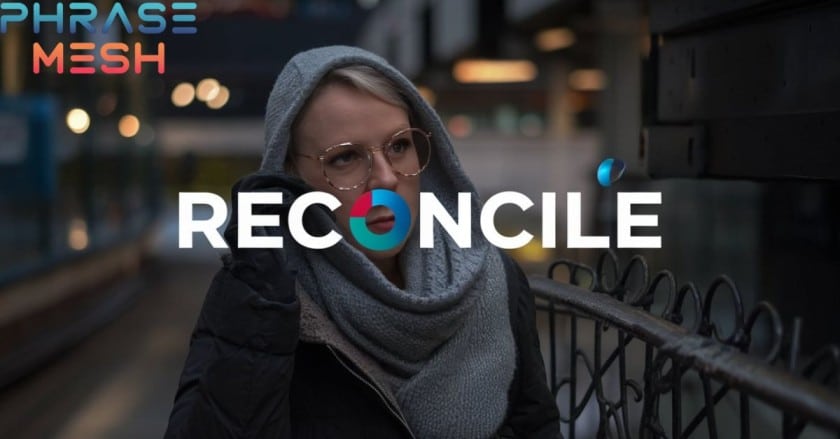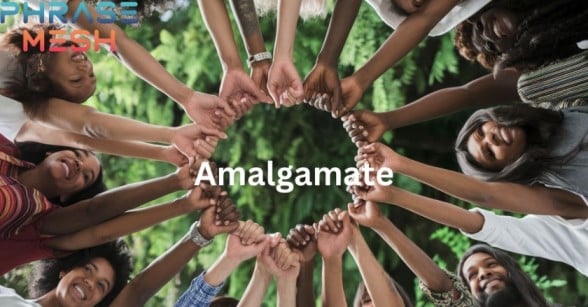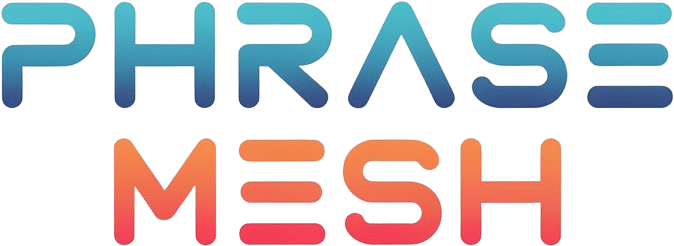In the competitive landscape of professional advancement, mastering the art of collaborate goes beyond mere teamwork. Your resume is a strategic canvas where collaborate transforms from a simple word to a powerful narrative of professional prowess.
Every time you collaborate, you’re painting a picture of your workplace potential. Smart professionals understand that collaborate isn’t just about working together—it’s about creating synergistic excellence.
The magic happens when you can collaborate in ways that showcase your unique ability to blend individual strengths into collective achievements, turning ordinary job applications into extraordinary career opportunities.
Is “Collaborate” a Good Resume Word?
“Collaborate” remains a solid resume word when used strategically, demonstrating your teamwork skills and ability to work effectively with others. While widely recognized, its impact depends on providing specific context and quantifiable outcomes that showcase your professional contribution. The key is to pair the term with concrete examples that highlight your unique collaborative approach and tangible results.
Pros of Using “Collaborate”
- Universally Understood: Immediately communicates team skills
- Professional Tone: Signals workplace communication competence
- Versatility: Applicable across multiple industries and roles
Cons of Using “Collaborate”
- Overused: Can appear generic without specific context
- Lacks Specificity: Doesn’t immediately demonstrate unique value
- Potential Weakness: Might seem passive without strong accompanying achievements
Example:
“Collaborated with cross-functional marketing team to develop targeted campaign, increasing customer engagement by 45% and generating $250,000 in additional revenue.”
20 Other Ways to Say “Collaborate” on a Resume
Here are 20 ways to express “collaborate” :
- Partner
- Coordinate
- Synergize
- Integrate
- Facilitate
- Alliance
- Synchronize
- Pool Resources
- Unify
- Converge
- Interface
- Aggregate
- Orchestrate
- Consolidate
- Reconcile
- Harmonize
- Triangulate
- Coalesce
- Interconnect
- Amalgamate
pro tip:
Embrace “idea bouncing”—encourage quick, unfiltered exchanges to spark creativity. Sometimes the best solutions come from spontaneous, collaborative thinking!
1. Partner (Strategic Cooperation)

To join forces with colleagues or organizations to achieve shared objectives.
Example Scenario:
In a professional email to a marketing director, you might write: “I partnered with the cross-functional marketing team to develop a comprehensive digital strategy that increased customer engagement by 42%.”
Professional Context: Demonstrates strategic partnership and advanced team skills by highlighting collaborative achievements.
2. Coordinate (Project Management)
To organize and synchronize multiple elements or team efforts toward a common goal.
Example Scenario:
Performance review statement: “Expertly coordinated complex projects, bridging communication gaps between multiple departments and ensuring seamless workflow.”
Professional Context: Showcases project management skills and ability to integrate diverse team contributions.
3. Synergize (Collective Achievement)
To combine efforts to produce a more effective outcome than individual contributions.
Example Scenario:
Resume achievement bullet point: “Synergized cross-functional teams to optimize production processes, reducing operational costs by 27%.”
Professional Context: Highlights the ability to create group synergy and drive collective success.
4. Integrate (Team Unification)
To bring different elements or team members together into a cohesive, functional whole.
Example Scenario:
Performance review narrative: “Successfully integrated new team members efficiently, creating a supportive environment that improved overall team performance by 35%.”
Professional Context: Demonstrates interpersonal skills and organizational effectiveness.
5. Facilitate (Communication Enhancement)

To make a process easier by providing support, removing obstacles, and encouraging smooth interaction.
Example Scenario:
Professional networking introduction: “Successfully facilitated weekly strategic meetings, enhancing interdepartmental communication and aligning team objectives.”
Professional Context: Emphasizes workplace communication and shared goal achievement.
6. Alliance (Strategic Networking)
To form a mutually beneficial relationship or partnership to achieve specific goals.
Example Scenario:
Resume achievement: “Established strategic alliances with key vendor partners, expanding company’s market reach by 50%.”
Professional Context: Illustrates professional networking and relationship-building capabilities.
7. Synchronize (Unified Action)
To coordinate actions or processes to occur simultaneously or in alignment.
Example Scenario:
Project proposal excerpt: “Our team will synchronize digital marketing efforts to create a unified brand messaging strategy.”
Professional Context: Demonstrates cross-functional collaboration and strategic thinking.
8. Pool Resources (Collective Problem-Solving)
To combine individual resources, skills, or assets to achieve a common objective.
Example Scenario:
Team meeting summary: “Pooled resources between IT and sales departments to develop an innovative customer tracking system.”
Professional Context: Shows resource pooling and creative problem-solving skills.
9. Unify (Convergence of Efforts)
To bring together different elements or teams to create a single, coherent entity.
Example Scenario:
LinkedIn profile description: “Unified global design teams to establish consistent brand identity across international markets.”
Professional Context: Indicates ability to bridge geographic and cultural workplace challenges.
10. Converge (Perspective Integration)

To bring different ideas, approaches, or perspectives together to create a comprehensive solution.
Example Scenario:
Recommendation letter excerpt: “Demonstrates exceptional ability to converge diverse perspectives, consistently driving innovative solutions.”
11. Interface (Professional Interaction)
To connect and communicate across different teams or departments, creating seamless professional interactions.
Example Scenario: Marketing Project Email
Subject: Collaboration for Upcoming Product Launch Campaign
Email:
Hi Team,
I’ll be interfacing with the design and content teams this week to finalize assets for our upcoming launch. Please share any updates or changes to the strategy by Friday so we can stay aligned. Looking forward to a successful rollout!
Best,
[Your Name]
Professional Context: Demonstrates ability to bridge departmental communication gaps and foster cross-functional collaboration.
12. Aggregate (Collective Resource Management)
To gather and combine efforts, skills, or resources to create comprehensive strategic solutions.
Resume Achievement:
- Aggregated cross-departmental insights to develop a comprehensive market strategy, increasing market penetration by 35%
Professional Insight: Highlights team skills and strategic resource pooling capabilities.
13. Orchestrate (Strategic Coordination)
To carefully arrange and manage complex team interactions, ensuring synchronized performance.
Performance Review Narrative: “Michael orchestrated multi-team projects, ensuring seamless communication and execution across global departments.”
Key Highlight: Showcases advanced workplace skills and leadership in project coordination.
14. Consolidate (Unified Performance)
To bring together separate elements into a single, strengthened organizational entity.
LinkedIn Profile Description: Consolidated regional sales teams to improve overall organizational performance and revenue generation
Professional Context: Demonstrates ability to enhance team performance and organizational effectiveness.
15. Reconcile (Problem-Solving Integration)

To bring different perspectives or approaches into harmony, creating innovative solutions.
Recommendation Letter Excerpt: “Sarah consistently reconciles conflicting departmental objectives, transforming challenges into collaborative opportunities.”
Professional Perspective: Highlights interpersonal skills and strategic problem-solving.
16. Harmonize (Synchronized Efforts)
To blend different skills or approaches into a cohesive and productive strategy.
Project Proposal: “We will harmonize international team communications to enhance global project efficiency and innovation.”
Key Contribution: Illustrates workplace communication and cross-functional collaboration.
17. Triangulate (Multi-Perspective Analysis)
To approach challenges from multiple angles, integrating diverse perspectives for comprehensive solutions.
Resume Achievement:
- Triangulated insights from marketing, sales, and product teams to drive strategic decision-making
Professional Impact: Demonstrates advanced strategic partnership and analytical thinking.
18. Coalesce (Unified Goal Achievement)
To come together and form a single, powerful entity focused on collective success.
Team Meeting Summary: “Our team coalesced diverse talents to exceed quarterly performance targets by 45%.”
Professional Context: Shows ability to create group synergy and drive collective achievement.
19. Interconnect (Network Building)
To establish meaningful connections between different teams, systems, or organizational components.
Professional Network Introduction: “Expertly interconnected departmental workflows to improve organizational efficiency and communication.”
Key Highlight: Emphasizes professional networking and systemic thinking.
20. Amalgamate (Comprehensive Integration)

To combine or unite multiple elements into a comprehensive and innovative whole.
Recommendation Letter: “David’s ability to amalgamate global research teams consistently drives breakthrough innovations.”
Professional Context: Highlights advanced team performance and strategic thinking.
Strategic Resume Writing Tips
Keyword Optimization:
- Use active voice
- Provide quantifiable results
- Align language with job description
- Demonstrate career development impact
Professional Communication Strategies:
- Avoid generic terminology
- Tailor language to specific industry
- Show concrete achievements
- Highlight team skills
Final Thoughts on Teamwork
Mastering diverse synonyms for “collaborate” transforms your resume from ordinary to extraordinary. Each alternative word tells a unique story of your professional journey, showcasing your ability to work effectively with others.
The right language can open doors to incredible opportunities. By strategically selecting powerful words, you demonstrate not just your skills, but your potential to drive meaningful change in any workplace environment.
FAQs:
1. What does it mean to collaborate effectively?
Effective collaboration means working together with shared goals, clear communication, and mutual respect, bringing out the best in each participant.
2. Why is collaboration important in the workplace?
Collaboration boosts creativity, drives innovation, and enhances problem-solving by combining diverse skills and perspectives to tackle challenges.
3. How can I improve my collaboration skills?
To improve collaboration, actively listen, be open to feedback, and prioritize team success over individual recognition.
4. What tools can help facilitate better collaboration?
Tools like Slack, Trello, or Zoom streamline communication, organize tasks, and keep everyone aligned, making teamwork more efficient.
5. How do I handle conflicts during collaboration?
Address conflicts early by fostering open dialogue, focusing on solutions, and ensuring all voices are heard to maintain a positive team dynamic.





